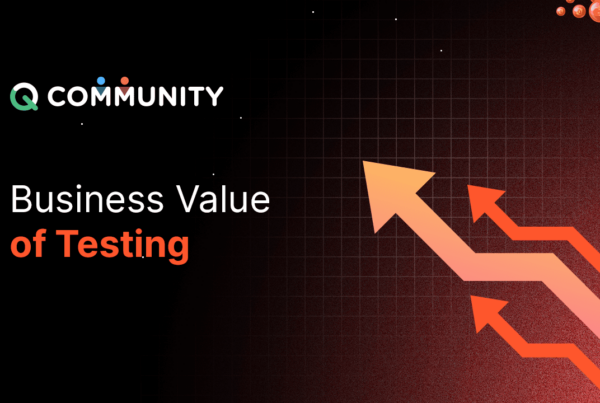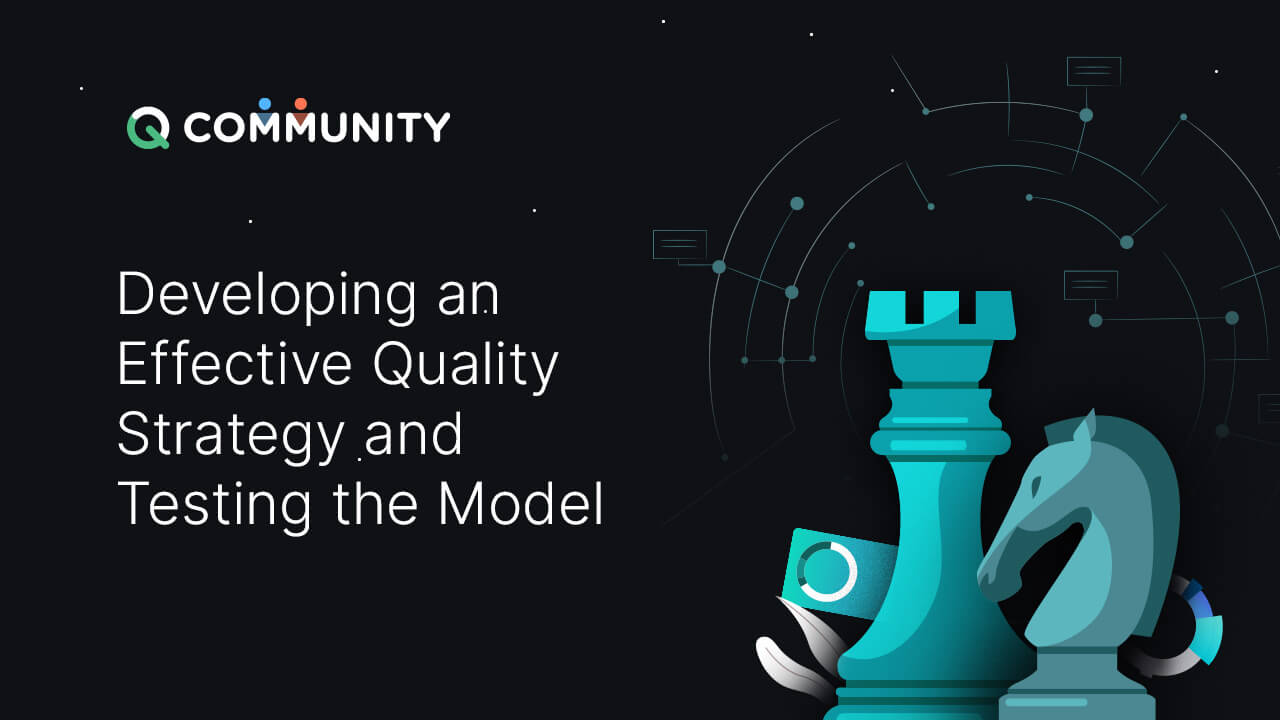Developing an Effective Quality Strategy and Testing the Model

One of my favorite starting points relating to Quality Strategies is, "A Good Quality Strategy is alike; every bad Quality strategy is terrible in its way and good in its similar way." As Tolstoi means in his book Anna Karenina, several aspects must be given, in terms of Testing, quality standards, controls, objectives, and, most important, adding business value.
The Quality Strategy should align with the organization's overall business objectives and be communicated and understood by all stakeholders in producing or delivering the products or services. A well-defined Quality Strategy can help organizations to improve customer satisfaction, reduce defects, and improve their reputation in the marketplace.
Understanding Quality and the best strategies
Whether we are working in a startup, a mid-size company, or a big company, Quality must be added at the beginning of our Agile process. However, I have seen many MVPs reconsider Quality, and it is costly adding those controls and standards later on.
We have read many articles, blog posts, and books related to Quality Strategies, checklists, and examples. Still, we keep those strategies as a simple document or just one activity to complete and ignore it after some time. A Quality Strategy is planning to achieve a specific goal or objective. Without a clear goal or purpose, a strategy becomes meaningless and directionless.
In addition to a clear goal or objective, a successful Quality Strategy also requires a thorough understanding of the organization's areas. This information is critical in identifying the most effective methods for achieving the desired outcome and adapting the Quality Strategy as circumstances change; keep it as a living document.
A Quality Strategy is more related to an organization's procedure to ensure that its products or services meet the desired level of Quality. In terms of Testing models and Quality strategies, how we can integrate a Testing Model; is typically integrated into the overall Quality Strategy. It provides a framework for testing the applications at each stage of the development life cycle, from requirements gathering to deployment.
As a result, organizations can identify and resolve defects, ensure that the software meets quality standards, and minimize the risk of issues arising in the production environment.
Testing Models in Action
A software testing model is a process or approach software testers use to plan, design, execute, and evaluate tests on software applications or systems. It is a framework that outlines the steps involved in testing software and helps ensure it meets the required quality standards
Software testing models typically provide a structured and organized approach to testing software. They often include a series of steps or phases that testers follow to test the software systematically. A high-level overview of how Quality and Testing form part of every stage of the software development lifecycle. It also briefly references What, How, When, and Where to test.
Overall, as we mentioned above, it helps testers use a more structured way, leading to better-quality software that meets the needs of its end-users (Some standard testing models are the V-model, Agile Testing, and the Spiral model). So let's explore more about it and how we can take advantage of those, whether working in a startup or a large organization.

Let's discuss the testing model above that incorporates steps during our Testing stages and steps:
Requirements gathering and analysis
- Define and document the software requirements (User Stories), design specifications, and test plans.
- Validate and refine the requirements as the software development progresses.
System design
- Create a detailed system design that incorporates the software requirements.
- Ensure the design is flexible and adaptable to changes in the software requirements.
Component testing
- Test the components to ensure that it meets the defined requirements.
- Test new features as they are developed continuously.
Integration testing
- Test the integration of various system components to ensure they work together as intended.
- Integrate and test new components as they are developed continuously
Unit testing
- Test individual units or modules of the software to ensure they meet the defined requirements.
Acceptance testing
- Perform acceptance testing to ensure the software meets the user’s requirements and expectations.
- Ensure that the software is adaptable to changes in user requirements and feedback.
Maintenance and updates
- Evaluate and improve the software based on feedback from users and testing results.
- Keep Planning and executing maintenance and updates to the test scripts to ensure their continued reliability and effectiveness.
The connection between Quality Strategy and Testing models is one of mutual support and alignment. A Quality Strategy provides a framework for setting goals and objectives, while testing models offer specific techniques and processes for achieving those goals. Together, they form a complete approach to ensuring high-quality software applications and services.
The Role of the QA Manager in Effective Quality Strategy
The Quality Manager is critical in developing and implementing quality strategies within an organization. The Quality Manager is responsible for identifying Quality objectives, defining Quality metrics, developing Quality policies and procedures, implementing Quality control processes, managing Quality improvement initiatives, ensuring compliance with standards and regulations (Local & Internationals), conducting training, education, and collaborating with other areas.
As Quality Managers, we must start identifying some Quality objectives; here are some examples of Quality objectives that a Quality Manager might focus on:
- Improving Product Quality. Improve product performance, and enhance customer satisfaction.
- Increasing Efficiency. Increase code quality, and optimize resources to improve efficiency.
- Embracing Quality Mindset: Improve Quality mindset and knowledge through training and development programs to improve their ability to deliver high-quality applications or services.
- Improving Customer Service: Improve customer satisfaction, reduce customer complaints, and increase customer loyalty.
- Increasing Innovation: Increase innovation, including testing process, quality coverage improvement, and new technology adoption, to improve the organization’s competitive advantage.
The specific metrics relevant to an organization will depend on its industry, applications or services, and Quality objectives. However, here are some general examples of Quality metrics that a Quality Manager may use (Accelerate Metrics):
- Customer satisfaction levels: This metric measures how satisfied customers are with the products or services provided by the organization. It can be measured through surveys, feedback forms, or other methods.
- Defect rate: This metric measures the number of defects or errors in products or services produced by the organization. It can be measured through inspections, Testing, or customer incidents.
- On-time delivery: This metric measures the percentage of products or services that are delivered on time to customers. It can be measured through logistics tracking or customer feedback.
- (Mean) Time To Recovery (MTTR/TTR) – How long it takes to recover from a failure in production.
- Change Failure Rate (CFR) – The percentage of deployments causing a failure in production.
We centered on Quality Manager's responsibilities; still, we must remember that Quality is with all and not only under one person; these items mentioned above could be fulfilled by an Agile Team or other figures in your organization.
Perfect Execution over Perfect Strategy in Startups
The best strategies only matter if we can achieve them accurately or faster enough to make any difference. Unfortunately, in my experience working with some startups, we usually hear that we must take perfect execution over perfect strategy daily. The most brilliant plans or the great flashy consultants will only help us to succeed if they can bring the strategy to life.

Executing well means picking a reasonable approach, moving quickly to learn what works and what doesn't, making adjustments, and trusting your instincts to achieve your desired outcome. Finally, remember that speed matters; a fast runner can take a few wrong turns and beat a slow runner who knows the shortest or more efficient route.
Here are some points about why a testing team executing well is more important than having perfect strategies:
- Strategies are not always perfect: No matter how well a strategy is planned, it may only sometimes be perfect. Unforeseen circumstances, such as changes in requirements, resource constraints, or time limitations, could affect the strategy’s effectiveness. Therefore, the testing team needs to be able to adapt and execute the strategy as efficiently as possible.
- Testing is an iterative process involving multiple rounds, not a one-time activity. It is possible to adjust the testing strategy after each iteration based on the feedback received from the previous rounds. Therefore, a testing team that can quickly execute the Testing and provides timely feedback is more valuable than a team that spends too much time developing a perfect strategy.
- Agile methodology: Agile methodology, widely used in software development, emphasizes the importance of flexibility and adaptability. It means that the testing team needs to be able to quickly adapt to changes in the project requirements and execute the Testing accordingly.
- Resource allocation: Time and resources are limited in any project, and it is essential to allocate them judiciously. If the testing team spends too much time developing a perfect strategy, it may need more time to execute the Testing adequately. Therefore, the testing team must balance the time spent designing and implementing the strategy.
- Communication and collaboration: Testing is a collaborative effort that involves different teams working together towards a common goal. Effective communication and cooperation between the testing team and other stakeholders, such as the development team, product owners, and project managers, are crucial for the project’s success. A testing team that executes well and provides timely feedback can facilitate better collaboration and communication.
While having a good testing strategy is essential, having a testing team that can execute well, adapt to changes, and provides timely feedback is even more crucial. A team collaborating with other stakeholders and allocating resources can contribute significantly to the project's success.
Wrapping Up
Remember to consider the work that goes into creating a good Quality Strategy. When you start, you might think you can knock something up quickly. However, it will soon build once you start thinking about your existing practices and where you want to go. The more you work on it, the more you remember the topics you need to cover, and there will be more than you expect.
So there you have it, an overview of a Testing Model and the process we can follow to create an effective Quality Strategy. Please feel free to adjust or change the Testing Model as part of your strategies. Also, if you have a different approach, let me know how it goes down with your teams.
Happy Testing!
Related Posts
 Importance Of Business Value of Testing
Importance Of Business Value of Testing
Importance Of Business Value of Testing
 Does The Test Pyramid Maintain Its Relevance Today?
Does The Test Pyramid Maintain Its Relevance Today?



































